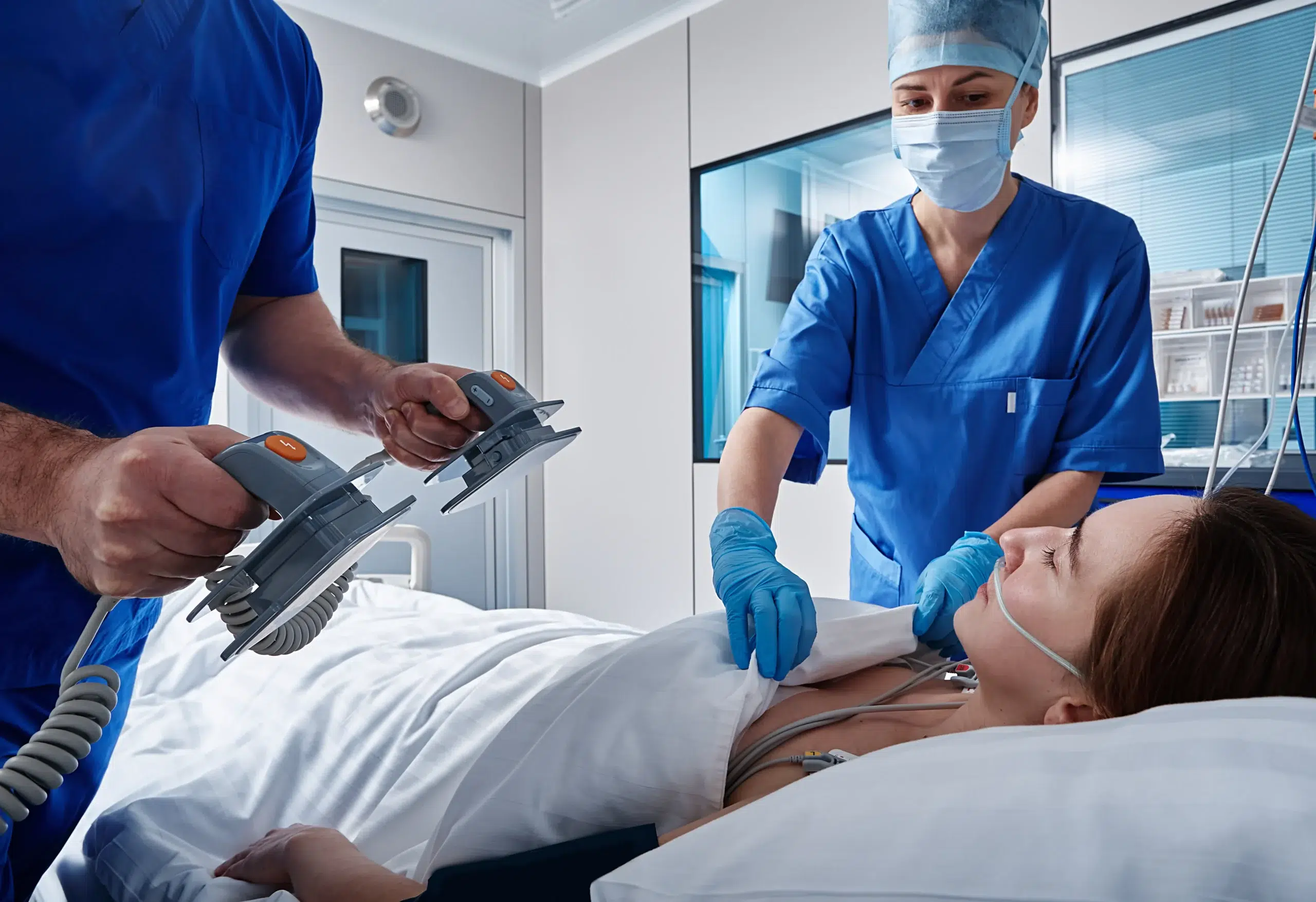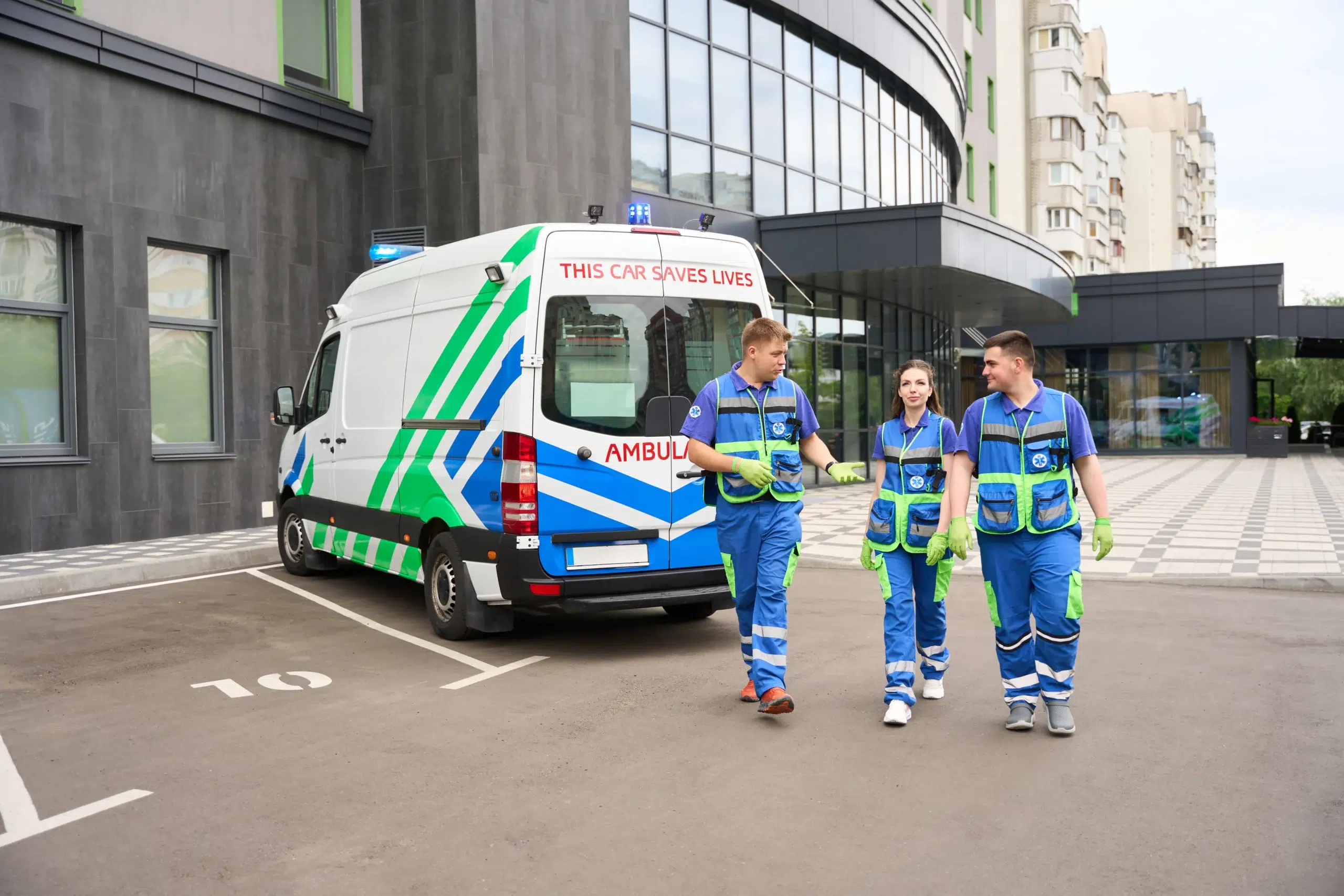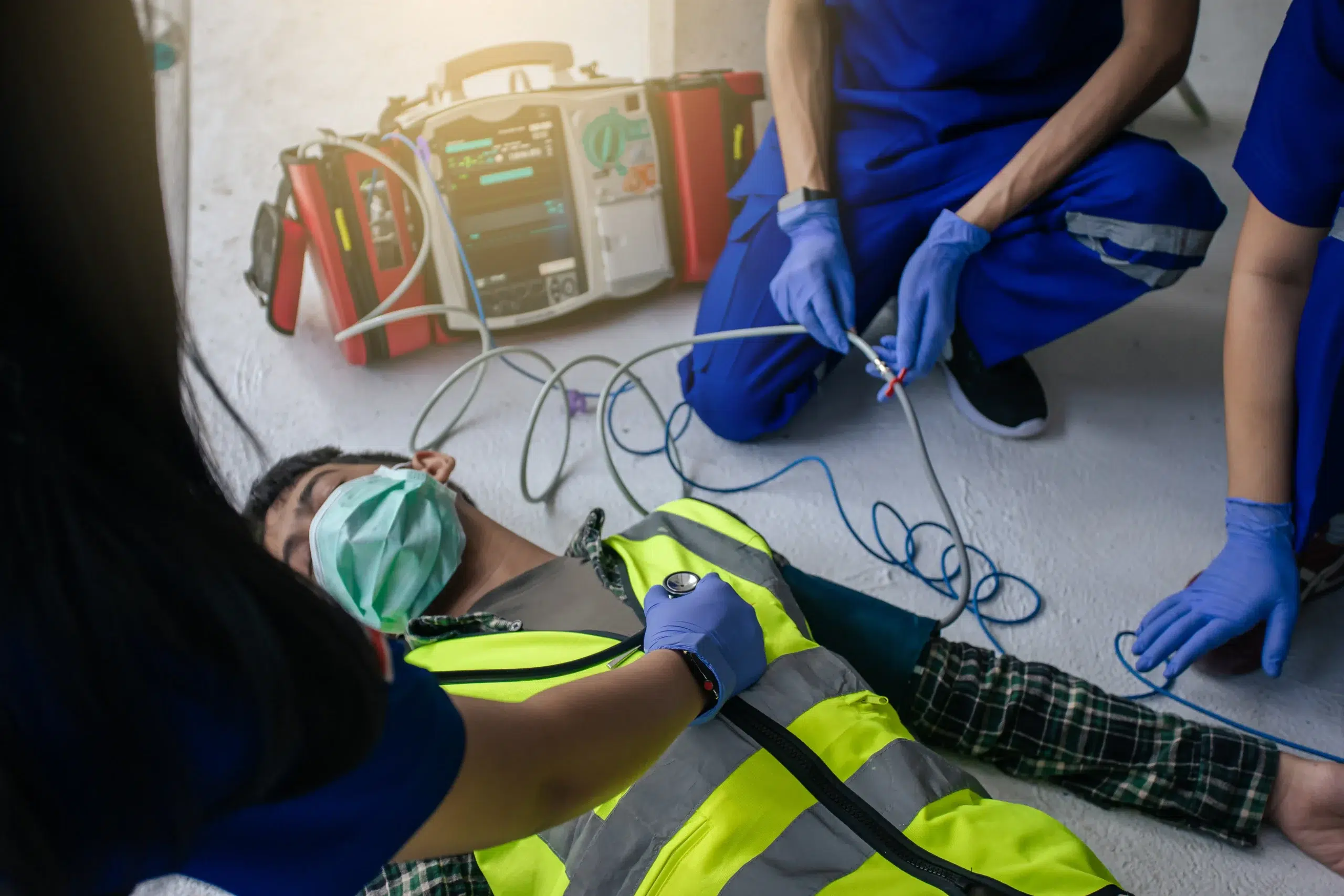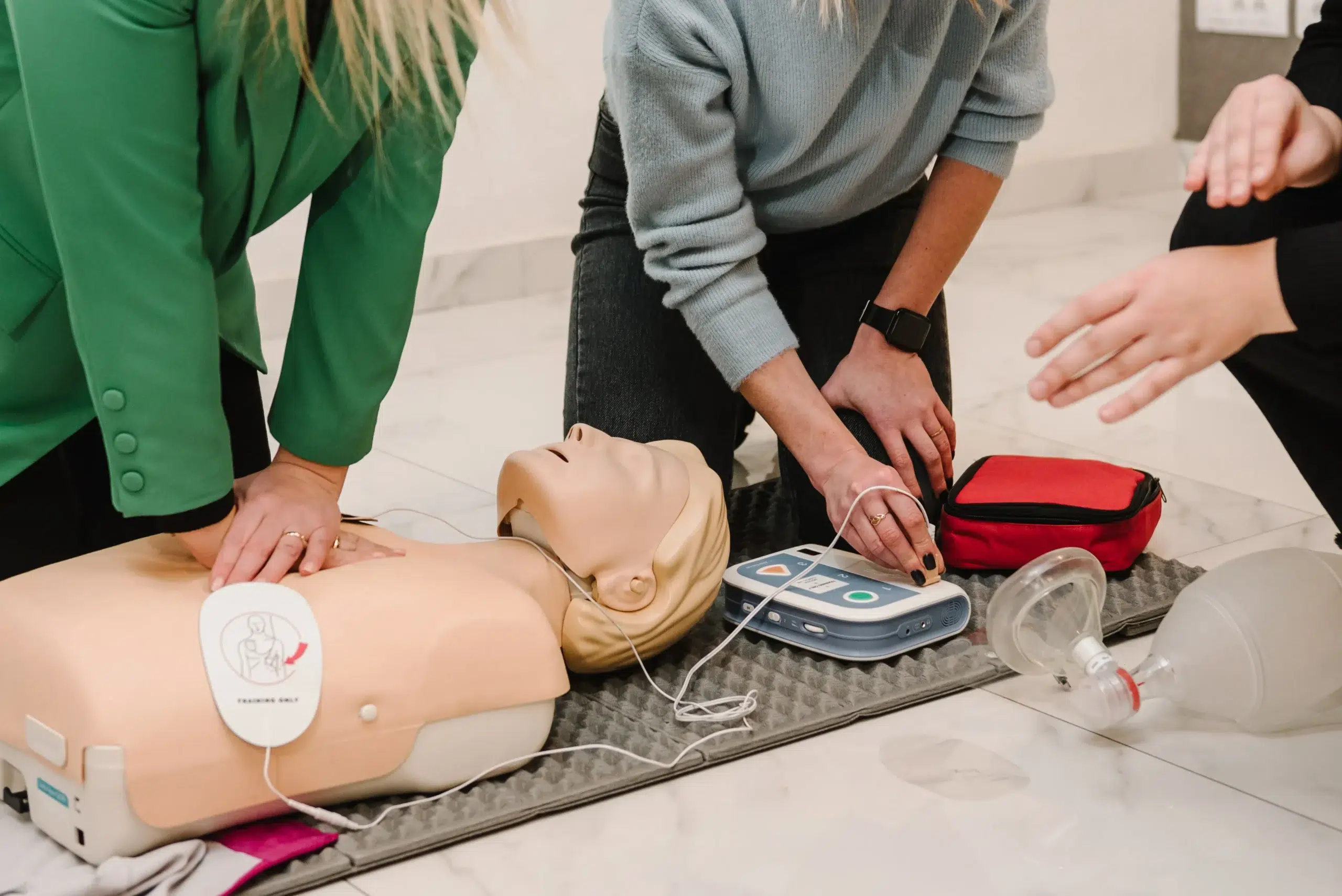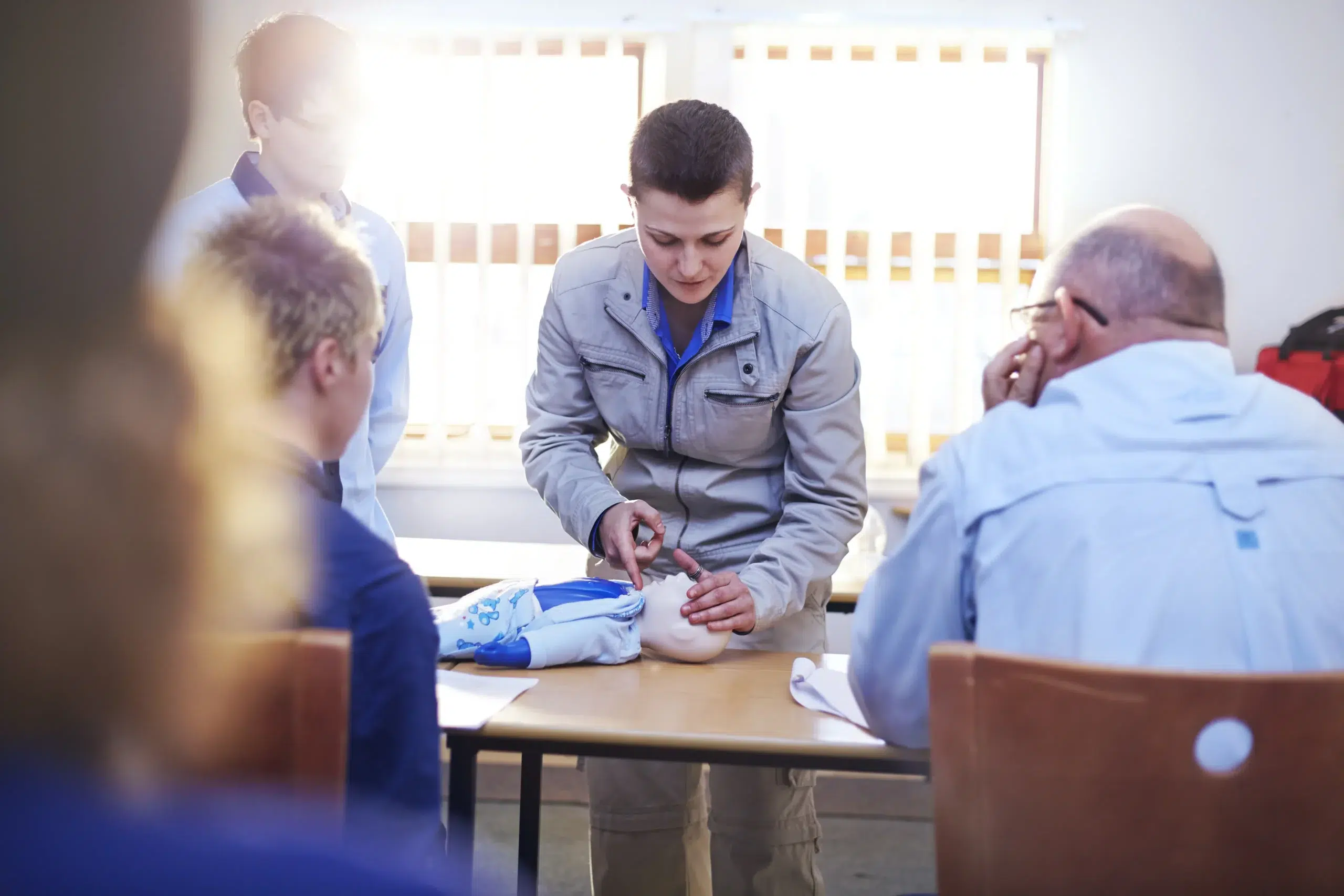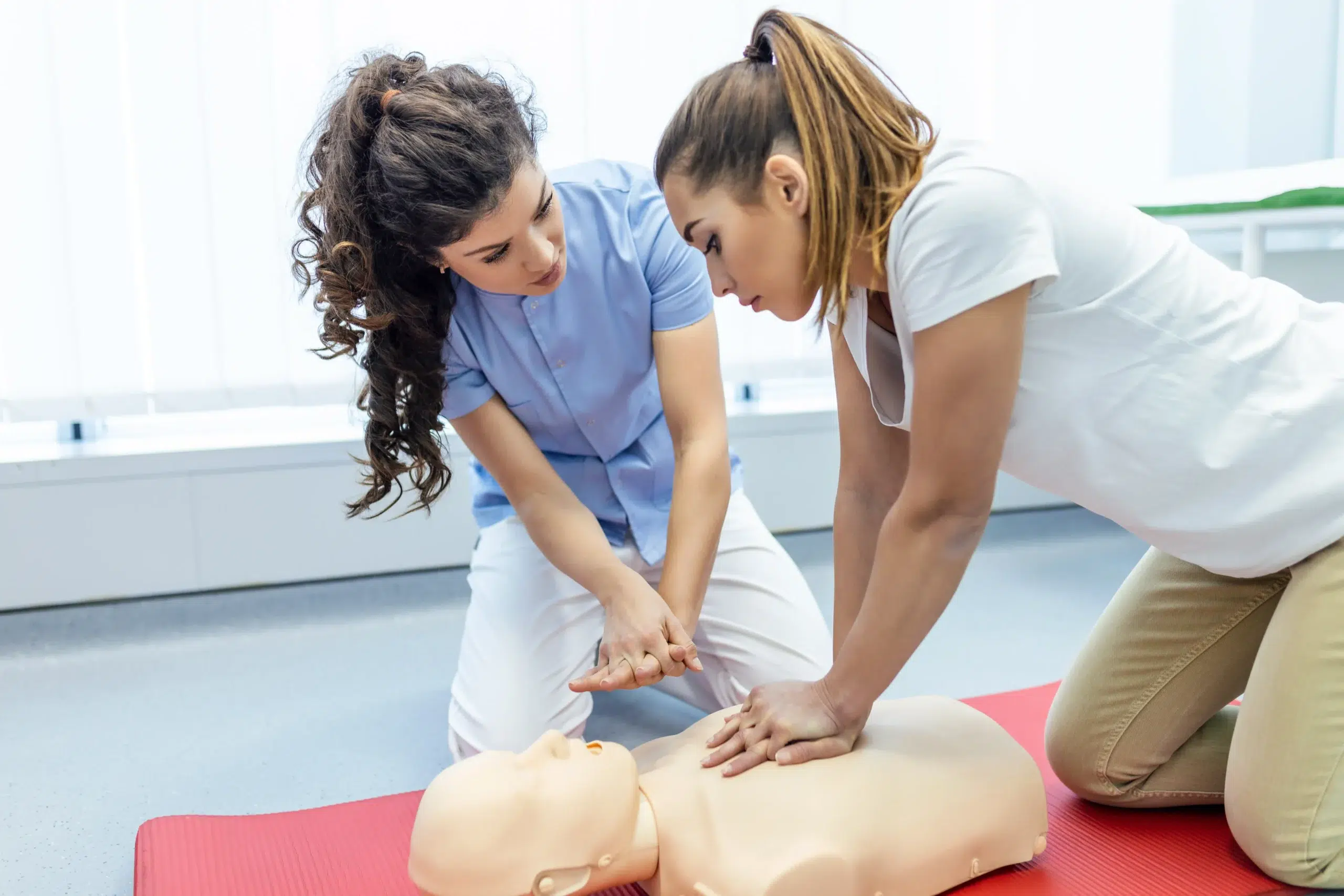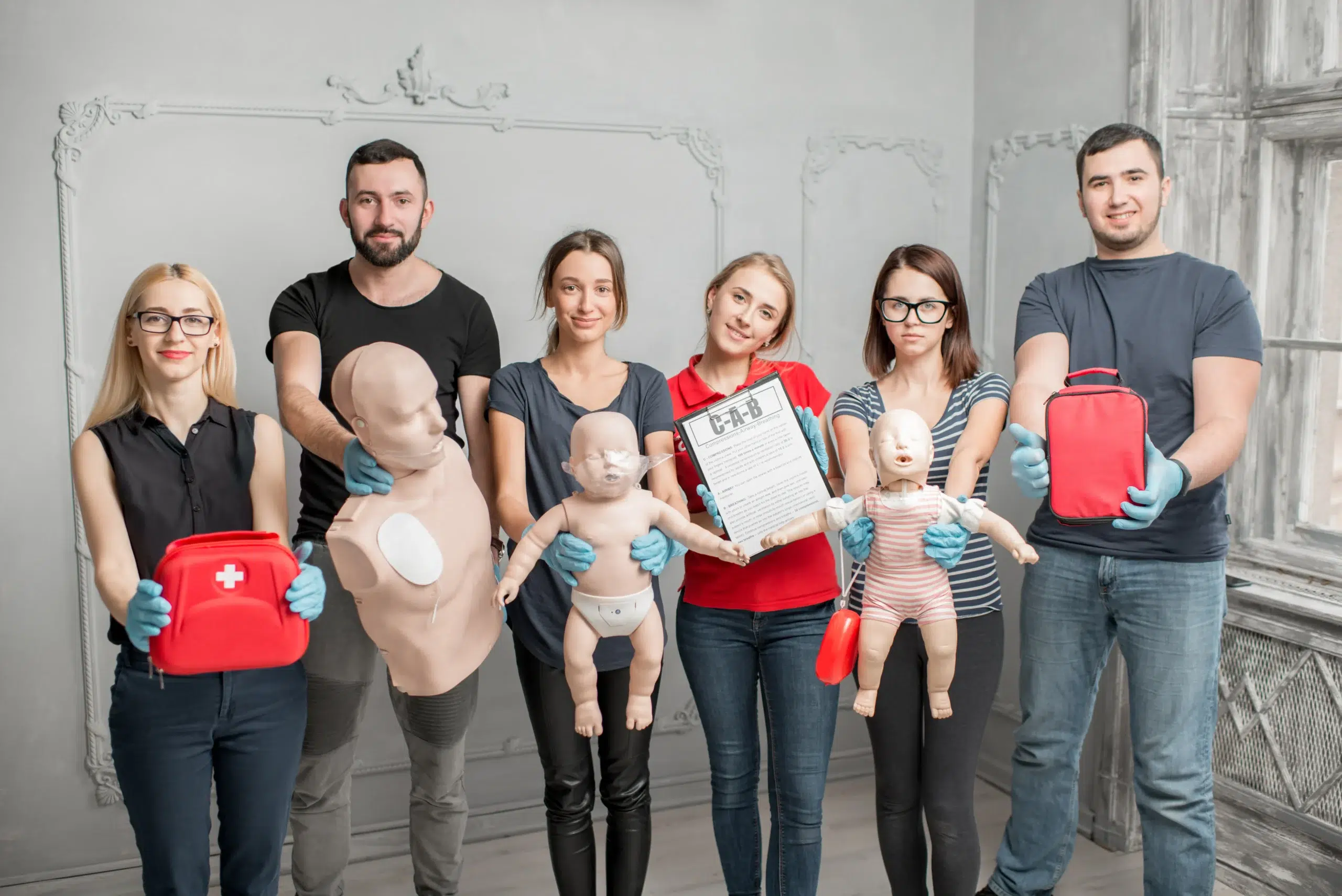Empowering yourself with life-saving skills is one of the most valuable things you can do. Basic Life Support (BLS) training provides you with the tools to respond confidently to medical emergencies. From performing high-quality CPR and using an AED to providing basic airway management, BLS equips you to make a real difference when it matters most. This guide will walk you through everything you need to know about BLS, including who needs it, where to find “bls training near me,” and how to choose the right course. We’ll also delve into the different training formats, costs, and tips for maintaining your skills long-term.
Key Takeaways
- BLS certification equips you for emergencies: Learn essential skills like CPR, AED use, and airway management to confidently respond to various medical situations.
- Choose the right BLS course: Consider factors like cost, schedule, and learning format (in-person, online, or hybrid) to find the best fit for your needs and learning style. Look for reputable providers like the AHA or Red Cross.
- Stay sharp with regular practice: Maintaining your BLS skills is crucial for effective emergency response. Practice regularly, stay updated on guidelines, and consider refresher courses to keep your skills current.
What is BLS Training & Why is it Important?
Knowing what BLS training covers and why it’s important can help you decide if it’s the right certification for you. Let’s break down the basics.
What is Basic Life Support (BLS)?
Basic Life Support (BLS) certification equips you with the skills to respond to medical emergencies. These skills include high-quality CPR, using an automated external defibrillator (AED), and basic airway management. BLS focuses on providing immediate care until advanced medical help arrives, emphasizing teamwork, high-quality chest compressions, and adequate ventilation. Pleasant Hill CPR Classes offers American Heart Association BLS certification to help you gain these vital skills.
Why are BLS Skills Important?
BLS skills are crucial because they can significantly improve outcomes during emergencies like heart attacks, strokes, or near-drowning incidents. Prompt intervention with BLS can help maintain vital functions and increase the chances of survival. Studies show that community training programs and interventions improve bystander CPR rates, leading to better survival rates. Learning BLS means you can confidently step in when every second counts. For convenient and affordable training options, check out our low price guarantee.
Who Needs BLS Training?
BLS certification is essential for healthcare providers, including doctors, nurses, paramedics, and other medical professionals. However, it’s also highly beneficial for anyone who might need to respond to a medical emergency, such as teachers, coaches, lifeguards, and other professionals in various fields. Even if you’re not a healthcare professional, having BLS training can empower you to assist family members, friends, or even strangers in critical situations. Contact us today to learn more about our BLS training options.
Find BLS Training Near You
So, you’re ready to get your BLS certification—great! Now, it’s time to find a training course. There are various options available, so let’s break down the top providers and how to choose the right one for you.
Top BLS Training Providers
Several reputable organizations offer BLS certification courses. Here are a few of the most common:
American Heart Association (AHA)
The American Heart Association offers a variety of BLS certification courses tailored for healthcare professionals, ensuring they are equipped with the latest life-saving techniques. They are a leading authority in resuscitation science, so their courses are highly respected.
American Red Cross
The American Red Cross also provides BLS certification and renewal training. Their courses are specifically designed for healthcare providers and first responders, emphasizing hands-on practice and real-life scenarios.
Local Hospitals & Medical Centers
Many local hospitals and medical centers offer BLS training programs. These can be a convenient and affordable option, often with flexible schedules. Check with hospitals in your area, like those offering Walnut Creek CPR classes, for more information.
Community Colleges
Community colleges frequently offer BLS training as part of their health sciences programs. This makes BLS training accessible to a wide range of students and professionals. Check your local community college’s course catalog.
Pleasant Hill CPR Classes
Pleasant Hill CPR Classes provides AHA-certified BLS training in various formats, including in-person, online, and hybrid options. We cater to the needs of busy individuals and offer a low price guarantee. Our RQI program is a great option for medical professionals seeking an efficient certification process. We proudly serve Pleasant Hill, Walnut Creek, and Concord, CA. Contact us today to learn more!
Choose the Right BLS Provider
Selecting the right BLS provider is crucial. You want quality training that meets your professional needs and enhances your life-saving skills. Consider factors like cost, schedule, course format, and the provider’s reputation. A good provider will offer support and answer any questions. Read reviews and compare options before enrolling in a BLS course. Make sure the provider aligns with your learning style and offers the type of certification you need. For example, if you’re a healthcare provider, you’ll likely need an AHA-certified course like the ones we offer at Pleasant Hill CPR Classes. This ensures your certification is recognized and accepted within your profession.
Find BLS Courses Online
Online BLS courses are increasingly popular, offering flexibility and convenience. These courses teach essential skills such as CPR and the use of AEDs, allowing individuals to learn at their own pace. ACLS Medical Training is one example of a provider offering online BLS courses. However, keep in mind that hands-on practice is a critical component of BLS training. If you opt for an online course, ensure it includes opportunities for in-person skills practice and evaluation. A blended learning approach, combining online learning with in-person skills sessions, can be a great way to get the best of both worlds.
BLS Training: Formats & Costs
In-Person, Online, & Hybrid BLS Training
BLS training courses come in several formats, so you can choose what works best for you. In-person classes offer hands-on training and personal interaction with instructors. If you have a busy schedule, online BLS training lets you learn at your own pace. For a blended approach, hybrid courses combine online learning with in-person skills sessions. Pleasant Hill CPR Classes offers a range of AHA-accredited courses, including BLS, ACLS, PALS, and First Aid.
Course Length & Flexibility
BLS training courses usually take between 2.5 and 4.5 hours. Many providers offer flexible scheduling, including weekend and evening classes. If you prefer to study independently, look for a “Challenge” option, where you can take a written exam and skills assessment to earn your BLS certification.
Average Costs & Discounts
The average cost for a CPR class is around $65, while a combined CPR and First Aid class typically costs around $85. Pleasant Hill CPR Classes has a low price guarantee and offers discounts for group classes. For details about pricing and current discounts, contact us directly.
BLS Certification & Renewal
BLS certification is valid for two years. When your certification is close to expiring, you can take a renewal course. Pleasant Hill CPR Classes offers convenient RQI programs to streamline the renewal process, which is especially helpful for busy medical professionals. This makes it easier to stay certified and current with the latest guidelines.
Prepare for Your BLS Training
Getting ready for your BLS training can make the whole experience smoother and more effective. Knowing what to expect, addressing any misconceptions, and using a few helpful tips can set you up for success.
What to Expect in a BLS Course
BLS classes equip you with the skills and confidence to respond to medical emergencies. You’ll learn how to perform CPR, use an AED, and relieve choking. Courses often use a mix of lectures, demonstrations, and hands-on practice. Various learning formats, including in-person, online, and blended learning, accommodate different schedules and learning styles.
Common BLS Misconceptions
Several misconceptions surround BLS training. One common myth is that it’s only for medical professionals. In reality, BLS certification is valuable for anyone who might encounter a medical emergency, from teachers and coaches to parents and caregivers. Another myth is that it takes too long. Many BLS courses can be completed in a few hours, making them accessible even for busy individuals. Finally, some believe that CPR training is sufficient. While CPR is a component of BLS, BLS training covers additional techniques and protocols essential for a comprehensive emergency response.
Tips for BLS Training Success
To make the most of your BLS training, come prepared to actively participate and ask questions. Regularly practicing your skills after completing the course is key for maintaining proficiency. Consider using online resources and refresher courses to stay updated on the latest guidelines. Keeping your certification current ensures you’re always ready to respond effectively in an emergency. Contact us today to learn more and get started.
Maintain & Use Your BLS Skills
Once you’ve earned your BLS certification, staying sharp is key. Your skills can make a real difference in a crisis, so keeping them fresh is essential. Here’s how to maintain and use your BLS skills effectively:
Practice BLS Regularly
Regularly practicing your BLS skills is like regularly hitting the gym—it keeps you in top shape for when it truly matters. Set aside time each month to review the core techniques: chest compressions, rescue breaths, and using an AED. Consider finding a study buddy to practice with, making it more engaging and helpful for both of you. Frequent practice builds muscle memory and confidence, ensuring you’re prepared to respond effectively in a real emergency. You can find helpful resources and practice scenarios online through sites like Medicus Training. This will help you maintain proficiency and potentially save a life.
Use BLS Skills in Everyday Life
While we hope you never have to use your BLS skills, being prepared for anything is always a good idea. Think of BLS as a valuable life skill, not just something you learned for a job. Knowing how to recognize the signs of a cardiac arrest or choking incident and how to respond appropriately can make you a vital resource in your community. Even seemingly small things, like knowing how to perform the Heimlich maneuver, can make a big difference. Medtigo offers insights into how BLS can be applied in everyday situations, empowering you to act confidently in times of need.
Stay Updated on BLS Guidelines
BLS guidelines and best practices can evolve as medical knowledge advances, so staying current is crucial. Think of it like updating your phone’s software—it ensures everything runs smoothly and efficiently. Regularly check the American Heart Association website for updates and consider taking refresher courses periodically. Online resources and courses are a convenient way to stay updated on the latest techniques and ensure your skills remain effective. Medicus Training offers helpful articles and tips for mastering BLS. Pleasant Hill CPR Classes offers a variety of courses, including RQI programs, designed to keep healthcare professionals’ skills sharp. You can also contact us with any questions about our low price guarantee and course offerings. We’re here to support you in maintaining your BLS proficiency and providing the best possible care.
Related Articles
- BLS Certification in Concord: Courses & Providers – Pleasant Hill CPR Classes
- BLS Courses Pleasant Hill: Your Certification Guide – Pleasant Hill CPR Classes
- BLS Classes in Concord: Your Guide – Pleasant Hill CPR Classes
- BLS Certification Pleasant Hill: Your Complete Guide – Pleasant Hill CPR Classes
Frequently Asked Questions
Is BLS certification only for healthcare professionals? Not at all! While BLS is essential for healthcare providers, it’s a valuable skill for anyone. Teachers, coaches, parents, caregivers, and anyone who wants to be prepared for emergencies can benefit from BLS training. Knowing how to respond effectively can make a real difference in any situation.
How long does it take to get BLS certified? BLS courses typically range from 2.5 to 4.5 hours, depending on the format and provider. Many providers offer flexible scheduling options, including weekend and evening classes, to accommodate busy schedules. Some providers also offer a “Challenge” option, allowing you to test out of certain components if you have prior experience.
What’s the difference between CPR and BLS training? CPR is a vital component of BLS, but BLS training encompasses a broader range of skills. In addition to CPR, BLS covers using an AED, relieving choking, and other essential life-saving techniques. It also emphasizes teamwork and high-quality chest compressions, providing a more comprehensive approach to emergency care.
How much does BLS training cost? The cost of BLS training varies depending on the provider and course format. CPR classes average around $65, while combined CPR and First Aid classes are typically around $85. Many providers offer discounts for group classes or returning students. It’s always a good idea to compare prices and check for any available discounts before enrolling. Pleasant Hill CPR Classes offers a low price guarantee, ensuring you receive high-quality training at a competitive price.
How often do I need to renew my BLS certification? BLS certification is typically valid for two years. To maintain your certification and stay up-to-date with the latest guidelines, you’ll need to take a renewal course before your current certification expires. Many providers offer streamlined renewal courses to make the process efficient and convenient.
